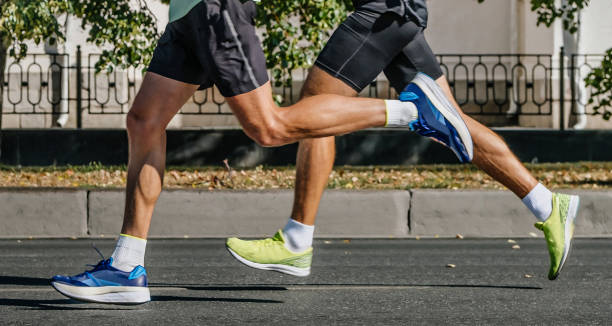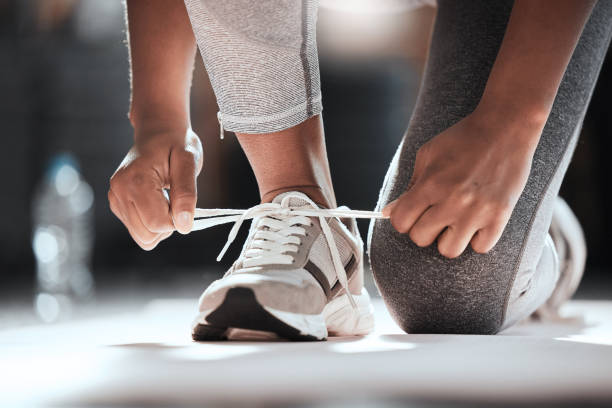Running is a fantastic form of exercise that not only boosts cardiovascular fitness but also strengthens muscles and improves overall well-being. Whether you are an experienced runner or just getting started, selecting the right running shoe is essential to enhance performance, prevent injuries, and ensure a comfortable and enjoyable experience. With countless options available on the market, it can be overwhelming to find the perfect fit for your specific needs. This guide will walk you through the important factors to consider when choosing your ideal running shoe, helping you make an informed decision that will support your running journey for miles to come.
Understanding Your Running Objectives
Before diving into the vast sea of running shoes, it is crucial to understand your running objectives. Are you training for a marathon, looking to complete a 5K, or simply aiming to maintain your fitness level? Setting clear goals for your running routine will guide you towards the right type of shoe that will meet your specific requirements.
Setting Clear Goals for Your Running Routine
If your goal is to complete a marathon or participate in long-distance races, your shoe needs will be different from someone who enjoys short, intermittent runs. Marathon runners benefit from shoes with enhanced cushioning and support to absorb the repetitive impact of long-distance running. On the other hand, those focusing on shorter runs might prefer lightweight shoes that provide ample flexibility and responsiveness.
Understanding your running objectives will not only aid in selecting the right shoe but also motivate you to stay on track and achieve your fitness goals.
Matching Your Foot Type to the Right Shoe
Every individual has a unique foot structure, and understanding your foot type is critical when choosing running shoes. The three main categories are neutral, over-pronation, and underpronation (supination).
Neutral runners have a natural gait and can choose from a wide range of shoes that provide good cushioning and support. Overpronators, those whose feet roll excessively inward, benefit from shoes with motion control features that help stabilize the foot and prevent over-pronation. Underpronators, whose feet roll outward, require shoes with extra cushioning to absorb the impact from their stride.

Identifying your foot type will guide you towards the shoe design that accommodates your specific needs, ensuring optimal comfort and reducing the risk of injury.
Furthermore, it is important to note that foot type can change over time due to factors such as age, weight fluctuations, and injuries. Regularly reassessing your foot type and updating your shoe selection accordingly will ensure that you continue to receive the necessary support and protection.
Additionally, it is worth mentioning that certain running shoe brands offer customization options for individuals with specific foot conditions or preferences. These options may include different levels of arch support, width options, and even personalized cushioning. Exploring these customization options can further enhance your running experience and address any unique requirements you may have.
Decoding the Running Surface Puzzle
Once you have a good understanding of your running objectives and foot type, it’s time to decode the running surface puzzle. The surface you primarily run on plays a significant role in determining the type of shoe that will best support your feet and enhance your overall running experience.
Choosing the Ideal Running Surface for Your Workouts
Are you predominantly a road runner, or do you enjoy hitting the trails? Do you prefer the unpredictability of off-road terrain, or do you stick to treadmills for convenience? Each surface has its own demands, and choosing a shoe designed specifically for it will optimize performance and reduce the risk of injuries.
If you primarily run on roads or sidewalks, you’ll want a shoe with good shock absorption and durability to withstand pavement impact. Alternatively, trail runners require shoes with grippy outsoles and added protection to navigate uneven surfaces. Treadmill runners can benefit from versatile running shoes that offer a balance of cushioning and responsiveness.
Understanding your preferred running surface will ensure that your shoe choice complements your activities, allowing you to run with confidence, stability, and comfort.
Unveiling Your Unique Running Style
In addition to your objectives and foot type, your running style is another important factor to consider when selecting the perfect running shoe. Identifying your running style will allow you to address specific biomechanics characteristics, ensuring a shoe that aligns with your natural movement patterns.
Identifying Your Running Style for Optimal Performance
Do you have a heel-first foot strike, a mid-foot strike, or do you land more on your forefoot? Different running styles generate different impact forces, and understanding your style will help you find a shoe that provides the right level of cushioning in the appropriate areas.
Runners with a heel-first foot strike may prefer shoes with ample cushioning in the heel area, offering superb shock absorption. Mid-foot strikers may benefit from shoes that provide an equal distribution of cushioning throughout the midsole. Forefoot strikers might favor shoes with more responsive and lighter designs, focusing on the front foot area.

By identifying your unique running style, you can fine-tune your shoe selection to optimize performance, prevent discomfort, and minimize the risk of injury.
Navigating the Shoe Selection Dilemma
With a plethora of shoe options available on the market, deciding on the right pair can be overwhelming. To find the perfect fit, it’s essential to balance various shoe features that address your specific requirements.
Balancing Shoe Features for the Perfect Fit
As you navigate the shoe selection dilemma, consider factors such as cushioning, stability, flexibility, and breathability. Each runner will have different priorities, so understanding your needs will help you prioritize the features that matter most to you.
A shoe with ample cushioning can provide a comfortable ride, especially for those aiming for longer distances. Stability features help prevent excessive foot movement and protect against over-pronation. Flexibility is important for natural foot movement, while breathability ensures proper airflow and moisture management.
Keep in mind that the perfect running shoe is a personal choice. What works for one runner may not necessarily work for another. It’s worth trying on multiple brands and styles to find the shoe that feels optimal for your individual needs.
Choosing the perfect running shoe is a crucial step towards achieving your running goals and maintaining a healthy lifestyle. By understanding your running objectives, matching your foot type to the right shoe, decoding the running surface puzzle, unveiling your unique running style, and navigating the shoe selection dilemma, you can make an informed choice that provides comfort, support, and optimal performance. Remember, investing time and effort in finding the perfect running shoe will pay off as you hit the road with confidence, motivated to achieve new milestones in your running journey.